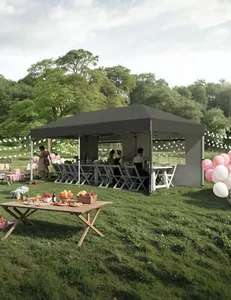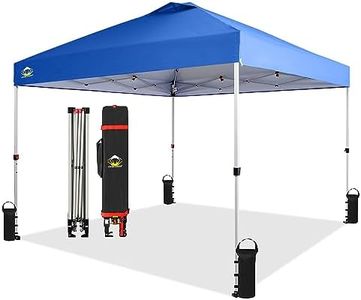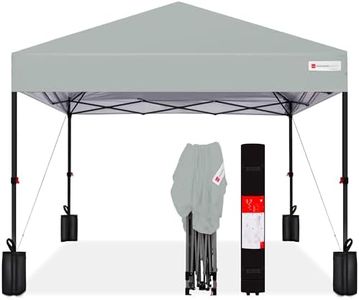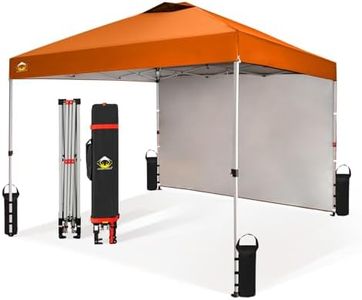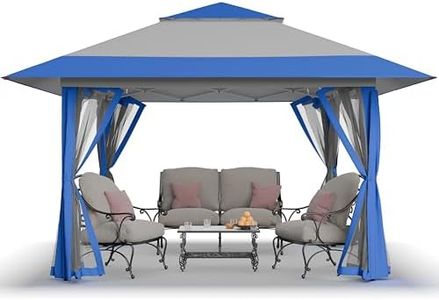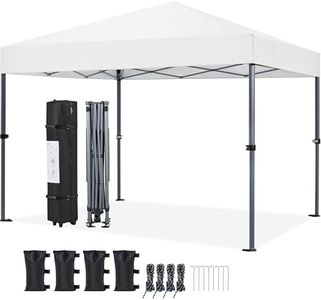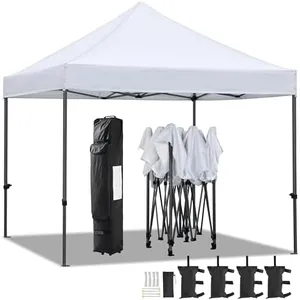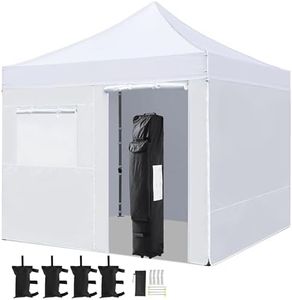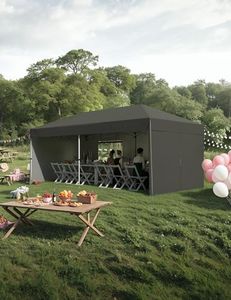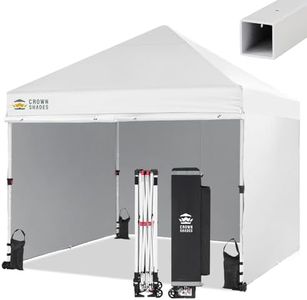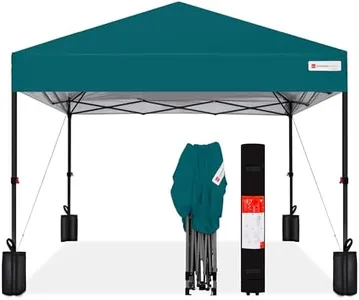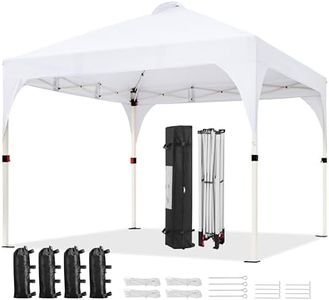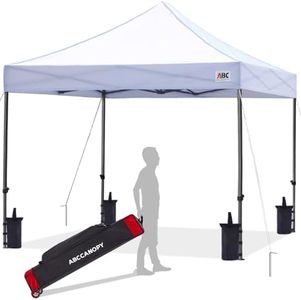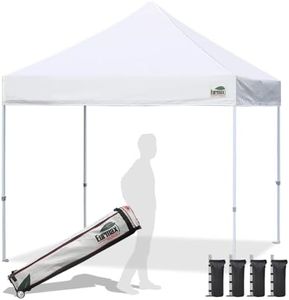10 Best Pop Up Canopies 2025 in the United States
Our technology thoroughly searches through the online shopping world, reviewing hundreds of sites. We then process and analyze this information, updating in real-time to bring you the latest top-rated products. This way, you always get the best and most current options available.

Our Top Picks
Winner
CROWN SHADES 10x10 Pop Up Canopy - Beach Tent with One Push Setup - Easy Outdoor Sun Shade for Events, Parties, Camping - Gazebo with STO-N-Go Cover Bag, Silver Coated Top, Blue
Most important from
10903 reviews
The CROWN SHADES 10x10 Pop Up Canopy stands out with its user-friendly design. The patented one-button easy setup allows two people to assemble the tent in seconds without any tools, making it a great choice for those who value convenience. The sturdy steel frame and durable 150D fabric materials contribute to its resilience. It’s both water and flame-resistant and offers excellent UPF 50+ UV protection, making it suitable for a variety of outdoor events, including beach outings, parties, and markets.
The integrated ventilation and clip system design reduce the risks of wind lift and rain pooling, which is a notable advantage for maintaining the canopy’s durability over time. The spacious 10'x10' footprint provides ample shade for up to 10 people and its compact packed dimensions ensure it fits easily into a vehicle trunk. However, at 36 pounds, it may be somewhat heavy for some users to transport. The STO’ N GO system with wheels and storage pockets for accessories helps mitigate this issue by making movement and storage straightforward.
The high-grade steel frame supports up to 120 lbs distributed across the frame, ensuring reliable performance. All these features make it an excellent choice for extended outdoor use at events like markets, festivals, and exhibitions. The CROWN SHADES 10x10 Pop Up Canopy offers a robust, easy-to-use, and highly portable shade solution that balances convenience with durability.
Most important from
10903 reviews
Best Choice Products 12x12ft 1-Person Setup Pop Up Canopy Tent Instant Portable Shelter w/ 1-Button Push, Case, 4 Weight Bags - Silver
Most important from
7347 reviews
The Best Choice Products 12x12ft Pop Up Canopy Tent is designed for easy use, boasting a one-person setup facilitated by a single central button and no-pinch height adjusters. This makes it convenient for those who may find traditional assembly cumbersome. The canopy provides ample shade with its 144 square feet coverage and offers flexibility with four preset height settings. Its compact storage into a rolling case with wheels and a durable handle makes it portable and easy to transport to various events.
This tent is versatile, suitable for a range of outdoor activities, from camping to parties, thanks to its sturdy steel frame and flame-retardant polyester canopy. The inclusion of four weight bags, capable of adding up to 112 pounds of support, enhances its stability, which is crucial for outdoor use.
However, at 38 pounds, it might be slightly heavy for some users to manage alone, especially when transporting it in its case. It offers a straightforward, portable shading solution for casual outdoor events, though potential buyers should consider if its weight aligns with their specific needs.
Most important from
7347 reviews
CROWN SHADES 10x10 Pop Up Canopy with 1 Side Wall - Beach Tent with One Push Setup - Outdoor Sun Shade for Events, Parties, Camping - Gazebo with STO-N-Go Cover Bag (Orange)
Most important from
3202 reviews
The Crown Shades 10x10 Pop Up Canopy offers a spacious 100 square feet of covered area, comfortably fitting about 10 people, making it a good choice for events, camping, and outdoor gatherings. Its standout feature is the one-button setup with patented center lock technology, allowing two people to quickly and easily open or close the tent without tools. The canopy fabric is made from durable 150D material that provides UPF 50+ sun protection and is both water and flame resistant, so it holds up well in light rain and sun exposure.
The included sidewall adds extra shade and wind protection, which is handy for more enclosed shelter. The high-grade alloy steel frame is strong and corrosion-resistant, designed to support significant weight and resist wear, which is important for longer-term or frequent use. At just under 42 pounds, it’s somewhat heavy but still manageable with the built-in wheels, helping with transportation and repositioning. One asset is the storage system that lets you collapse the canopy without removing the fabric, plus dedicated pockets for stakes and sandbags, simplifying packing and setup.
While the canopy offers good ventilation thanks to its open sides and height, it does not include mesh panels that might improve airflow and bug protection. This canopy fits well for those seeking a durable, easy-to-set-up shelter for outdoor events.
Most important from
3202 reviews
Buying Guide for the Best Pop Up Canopies
Choosing the right pop-up canopy can make a significant difference in your outdoor events, whether it's for a family picnic, a market stall, or a camping trip. The right canopy will provide adequate shelter, be easy to set up and take down, and withstand the elements. To make an informed decision, consider the following key specifications and how they align with your needs.FAQ
Most Popular Categories Right Now
